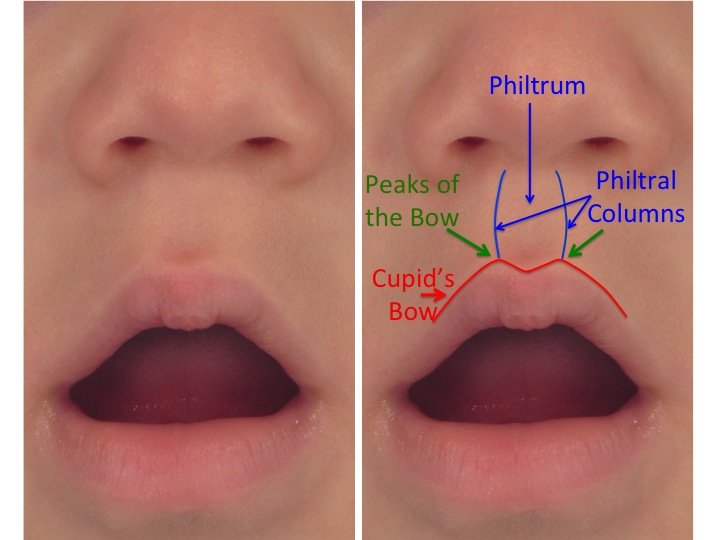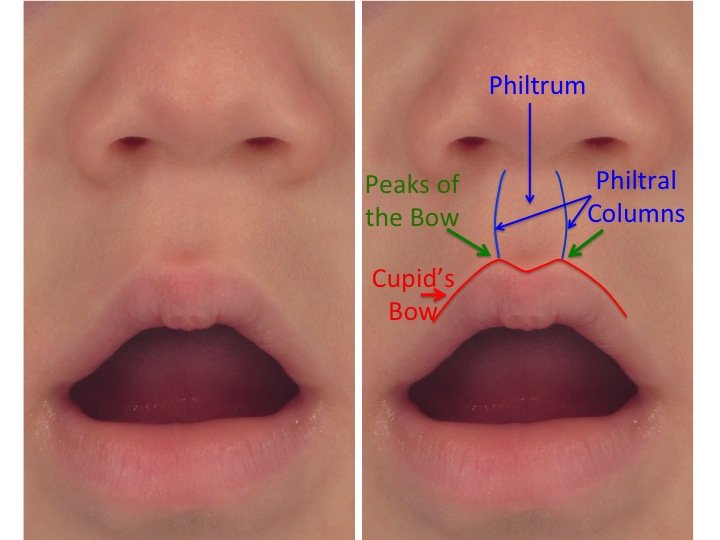Cleft Lip Anatomy
Cleft lip causes an abnormal appearance of both the lip and the nose. This page shows the normal anatomic features of the lip and nose to help in understanding where clefts in the upper lip occur and how they affect a child’s appearance and function.
A baby’s upper lip, nose and roof of the mouth (palate) have completed formation by only 10 weeks into the pregnancy. The philtrum is the normal feature found in the middle portion of the upper lip seen below. The lip forms from three parts merging during pregnancy– the center part and the left and right side parts. The center and side parts of the upper lip meet at the philtral columns.
Normally, the side portions of the lip meet and fuse (connect) with the center portion of the lip. These connections allow for the muscle of the lip that allows us to pout our lips, kiss, whistle and use a straw (orbicularis oris muscle) to connect and develop intact. The places where the center and side portions of the lip merge become the philtral columns. These are the raised ridges extending the vertical length of the lip from the mouth up to the nose. The Cupid’s bow is the normal shape of the lip where the skin and pink portions of the upper lip (vermilion) meet. The philtral columns meet the pink portion of the lip at the peaks of Cupid’s bow. (See diagram below)
Note that in cleft lip and palate the cleft involves the floor of the nostril, gums and palate. The orbicularis muscle, that allows us to kiss, whistle and use a straw, is not intact. The effect of the ends of the muscle pulling on each side of the cleft causes a wide separation of the gums that causes the nostril to become very stretched out and flat. If both the left and right side fail to meet the center part of the lip a bilateral cleft lip forms as seen below.
In complete cleft lip the cleft extends up through the entire height of the upper lip and through the floor (bottom) of the nostril. In cleft lip and palate the cleft continues back through the bone of the gums and the roof of the mouth. While the features of isolated cleft lip alone are striking, the involvement of the underlying facial bones in cleft lip and palate creates significant changes in the facial skeleton that further affect the appearance of the face.
In both unilateral and bilateral cleft lip, the majority of patients will have some involvement of the gums and palate. Patients with cleft lip and palate have the most severe changes in the appearance of the lip and nose because the separation in the muscles, gums and palate creates a wide gap that separates the lip segments and drastically changes the shape of the nose. The cleft nasal anatomy page will further explain the changes in the nose.




